
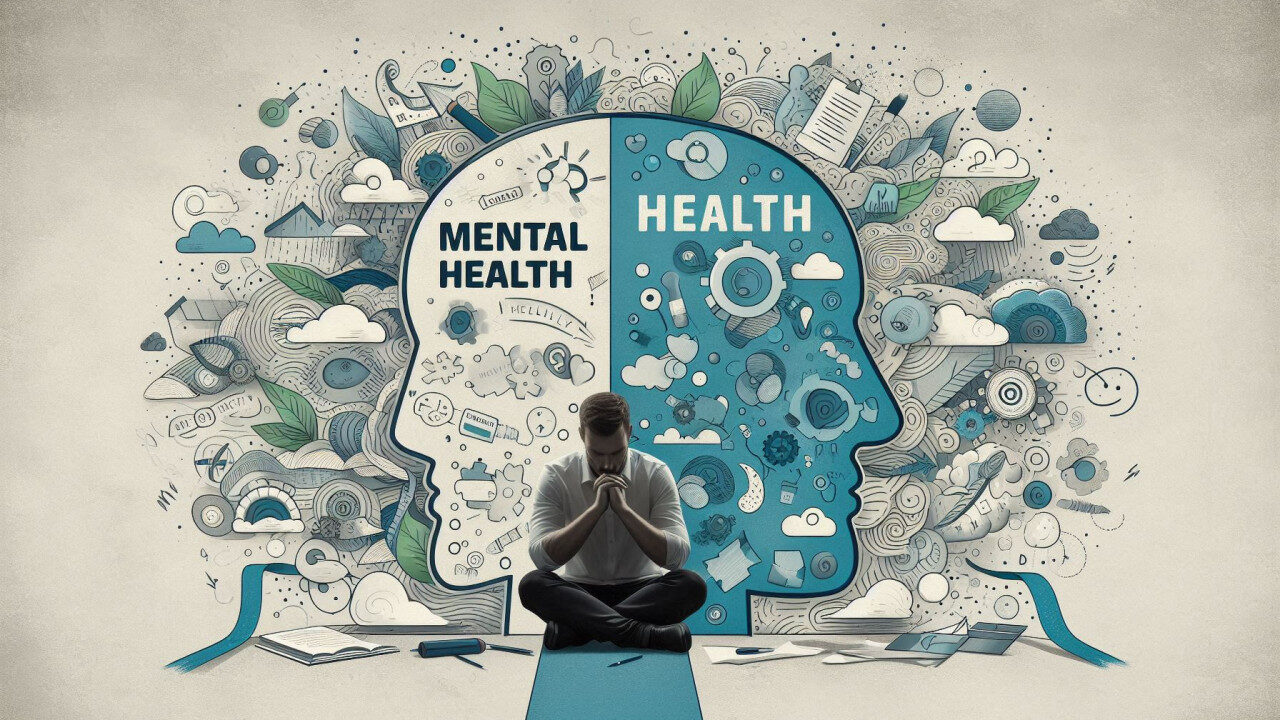
Mental health is a term that you often hear, yet it can remain elusive to many of us:
More importantly, how can we shift our understanding from abstract concepts to something tangible and actionable?
This first blog post in the “Mental Health, Well-being, and Resiliency in the Workplace” series seeks to answer these questions. It will lay the foundation for a deeper exploration of mental health, discussing its fluid nature, its interconnection with well-being, and how it impacts everyone – whether they realise it or not.
By the end of this post, I hope you will have a better understanding of what mental health is, why it matters, and what small yet meaningful steps you can take to support it in your own life and in the lives of those around you.
Mental health is a phrase we often hear, yet its meaning can sometimes feel abstract or difficult to understand. At its core, mental health is about how we think, feel, and behave. It influences how we handle stress, relate to others, and make decisions. In simpler terms, mental health is as much a part of our overall well-being as physical health. Just as we strive to maintain a healthy body, we must also care for our minds.
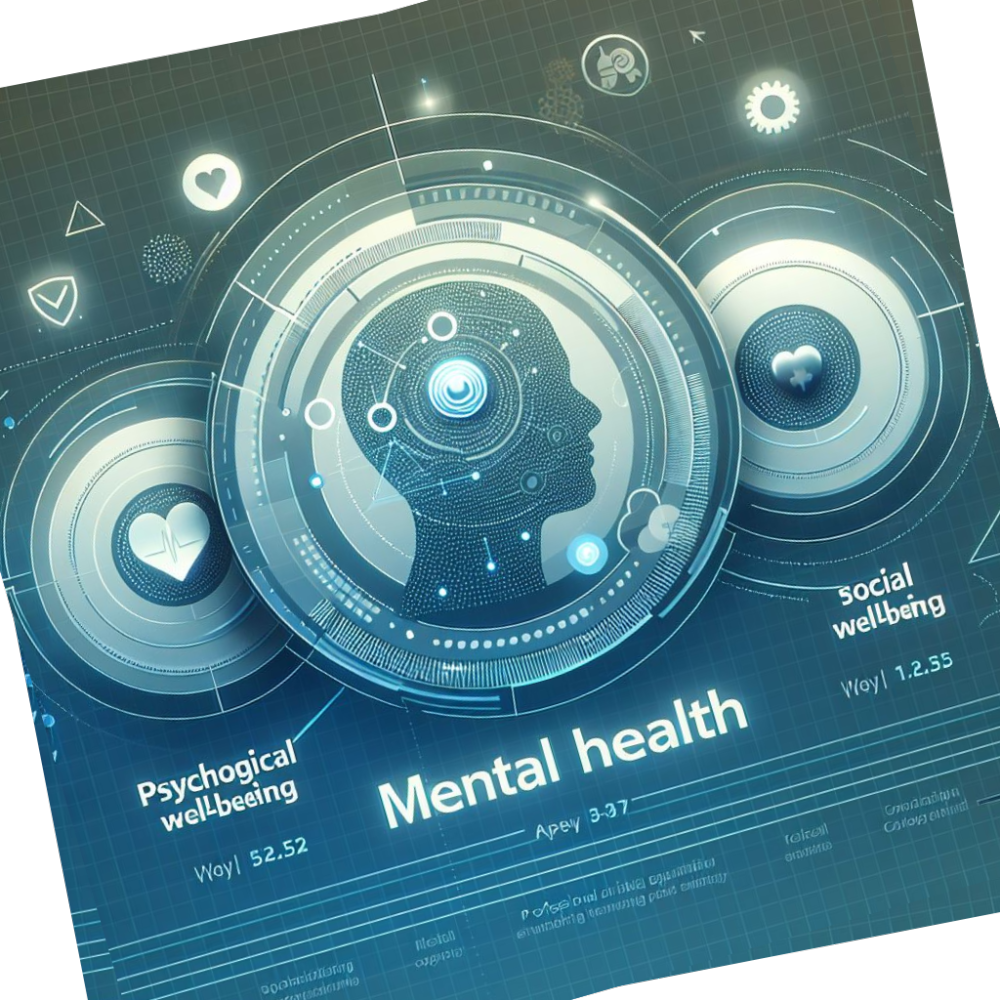
To better understand mental health, it helps to think of it as having three interconnected components:
When these components are in balance, we feel better equipped to face life’s ups and downs. However, just like physical health, our mental health is not static, it fluctuates based on various (often unforeseen or unexpected) factors.
Mental health and well-being are deeply interconnected. Well-being encompasses broader elements of an individual’s satisfaction with life, such as their physical health, relationships, purpose, and personal fulfilment. Things that support well-being such as eating a balanced diet, staying active, getting enough sleep, and engaging in mindfulness activities also enhance our mental health.
Imagine a 10-year-old child trying to focus in school but skipping breakfast. Their lack of energy makes it harder to concentrate, leaving them feeling frustrated and irritable. This is a simple example of how well-being habits, or the lack thereof, influence mental health. Small changes, like eating a nutritious breakfast, can significantly improve both mental and physical well-being.
Mental health is not just about the presence of a mental illness. Everyone experiences fluctuations in their mental health, just as they do with physical health. For example:
These are normal responses, yet they highlight the dynamic nature of mental health. It is important to recognise that mental health is not a binary state of being “well” or “unwell“. Instead, it exists on a scale that shifts over time and is different for every single living person.
To make this concept more relatable, consider mental health as a garden. A healthy garden requires care – water, sunlight, and regular maintenance. Sometimes, it faces challenges like pests or bad weather, but with attention and effort, it can grow again. Similarly, mental health requires ongoing care. Activities such as relaxation, connecting with loved ones, and seeking help when needed are the “nurturing” elements that keep the garden flourishing.

In the workplace, mental health can influence everything from communication to productivity. However, it is often overlooked or misunderstood. For example, a team member may seem disengaged during meetings, which could be perceived as a lack of interest. In reality, they might be struggling with stress or anxiety. By understanding mental health, workplaces can create environments where employees feel supported and valued.
Mental health is a part of everyone’s life, yet it remains one of the most misunderstood and stigmatised topics. Misconceptions about mental health can create barriers to understanding, support, and recovery, preventing individuals from seeking help when they need it most. Here I will address common misunderstandings, explore how stigma has changed over time, and discuss my thoughts on what still needs to be done.
The stigma surrounding mental health has been a long-standing issue, often fuelled by fear, misunderstanding, and cultural differences. Historically, people with mental health disorders (note! a disorder is not the same as a disability) were frequently dismissed, silenced, or even ostracised.
As a reference, I started work in 1987 after completing my ‘O’ Level and CSE exams, mental health was rarely discussed, not only in a school or workplace, but socially as well; It was (and still is for many) a taboo subject. At that time, someone showing signs of stress, anxiety, or depression might have been labelled as “difficult“, “not a team player“, “not well“, and often “disabled“. It was not uncommon for colleagues, friends and family members to avoid these conversations altogether, leaving individuals isolated and unsupported.
Fast forward to today (November 2024), and while awareness has improved significantly, stigma still exists. Many employees worry about how they will be perceived if they disclose mental health challenges, fearing judgement, discrimination, or even career repercussions. This silence can perpetuate the cycle of misunderstanding and stigma.
Despite the challenges, progress has been made. Key milestones include:
The shift is growing increasingly more visible in workplaces today, where mental health initiatives, Employee Assistance Programmes (EAPs), and training for individuals (does not have to be a manager, or HR employee) are becoming more common. These changes reflect a growing understanding of mental health as a critical aspect of well-being.
Imagine you are still at primary or secondary school, it is 1987 and you are struggling with bullying at school. Back then, you might have been told to “toughen up” or “stop making a fuss.”
Fast forward to today, where a child in the same situation is more likely to have access to a school counsellor, supportive teachers, and peer education about bullying and its impact on mental health.
This thought provoking consideration highlights how conversations around mental health have evolved, both in schools and workplaces – is it still incorrect to tell someone to “Toughen Up”?
From a personal perspective as a Mental Health First Aider in the workplace, It is 100% neglectful to say “toughen up” in a school, or a workplace, but as a parent, I would much rather try to help my child to be careful, to offer choices on what they can do to “toughen up”. The modern day context has the correct answer – and as a parent you want your children to be safe, and to be able to live a life that they can enjoy and have no fear of. The scales of balance are challenging at the best of times, at the worst of times (and as a parent) these scales can often cause unexpected outcomes.
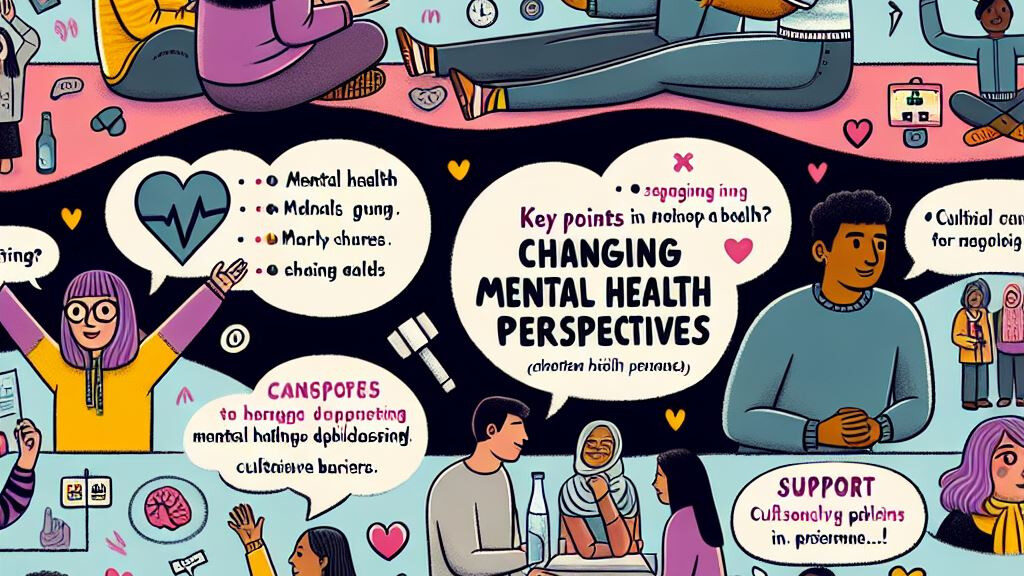
While progress has been made, there is still work to do:
As a Mental Health First Aider, one of the most important things I can do is to challenge misconceptions and demonstrate empathy. By listening, offering support, and creating an environment of trust, we can begin to dismantle the stigma surrounding mental health.
Mental health is not something that only affects a few – it impacts every person, every workplace, and every community. Just like physical health, mental health is a constant presence in our lives, influencing how we think, feel, and behave. Whether we realise it or not, it shapes our decisions, relationships, productivity, and overall happiness.
In the workplace, mental health and well-being play an especially critical role. A thriving workforce is not just about meeting deadlines or hitting targets, it is about creating an environment where people feel valued, supported, and able to perform at their best. Recognising the importance of mental health for everyone is the first step towards achieving this balance.
Mental health is connected; or rather “tangled” with our daily experiences, whether we are at work, home, or out with friends. Consider these points:
A student who struggles to focus in class because they did not sleep well the night before. This seemingly small issue can snowball, affecting their performance and confidence.
Adults can, and often face similar challenges, such as a sleepless night before a major meeting that can impact their focus and decision-making.
Well-being and mental health are entwined. Well-being encompasses the physical, social, and psychological factors that contribute to a fulfilling life. Practices that support well-being such as eating healthily, exercising, connecting with others, and practising mindfulness have a direct impact on mental health.
However, neglecting well-being can have the opposite effect.
For organisations, understanding and supporting mental health is no longer optional, it is essential. Mental health directly impacts:
Research shows that organisations lose billions annually due to absenteeism, presenteeism (when employees are at work but not fully functioning due to poor mental health), and turnover.
Supporting mental health is not just about doing the right thing, it is a sound business strategy. An organisation that is seen to promote and encourage mental health in the workplace will reap the benefits internally, with clients, networking events, marketing and establishment within the business communities.
When mental health is prioritised, the benefits extend far beyond the individual. A supportive workplace culture creates a ripple effect, encouraging employees to bring their best selves to work and to support others in doing the same. This fosters a sense of community and shared responsibility, creating a healthier and more resilient organisation.
Imagine a workplace where an employee feels safe to admit they are struggling with stress. Their manager listens without judgement, helps them identify coping strategies, and temporarily adjusts their workload to alleviate pressure.
This simple act of empathy not only helps the individual regain balance and productivity but also sends a powerful message to the entire team: the organisation values and cares for its people. Such an environment fosters trust, reduces absenteeism, and boosts employee retention.
Imagine a workplace where employees do not feel safe to share their struggles. An individual overwhelmed by stress might remain silent, fearing judgement or potential career repercussions. Without support, their mental health may deteriorate further, leading to burnout, extended sick leave, or even resignation.
According to a report by Deloitte, poor mental health costs UK employers approximately £51 billion annually, with around £22 billion attributed to staff turnover alone. Furthermore, a study by Mental Health First Aid (MHFA) England found that 51% of long-term sick leave is due to stress, depression, or anxiety.
This indicates that mental health issues are a leading cause of extended absences from work, which can impact overall productivity and employee morale. The contrast between these two scenarios underscores the importance of prioritising mental health in the workplace. A supportive culture not only benefits employees but also drives organisational success, proving that investing in mental health is both a compassionate and strategic choice.
One of the most important lessons I have learned is that mental health is not just for those facing challenges – it is for everyone. Just as we all should take steps to maintain our physical health, we should all take proactive steps to understand and improve our mental health. This includes:
By recognising the importance of mental health and well-being in daily life and in the workplace, we take a critical step toward creating healthier, happier, and a more resilient place to work and live.
#WorktoLiveNOTLivetoWork
Mental health is not a fixed state, it is fluid and dynamic, changing over time based on our circumstances, environment, and the choices we make. Just as physical health can fluctuate with diet, exercise, or illness, mental health is influenced by a range of factors, both positive and negative. Recognising this fluidity is crucial for understanding that mental health requires ongoing care and attention, rather than being something that is either “good” or “bad.”
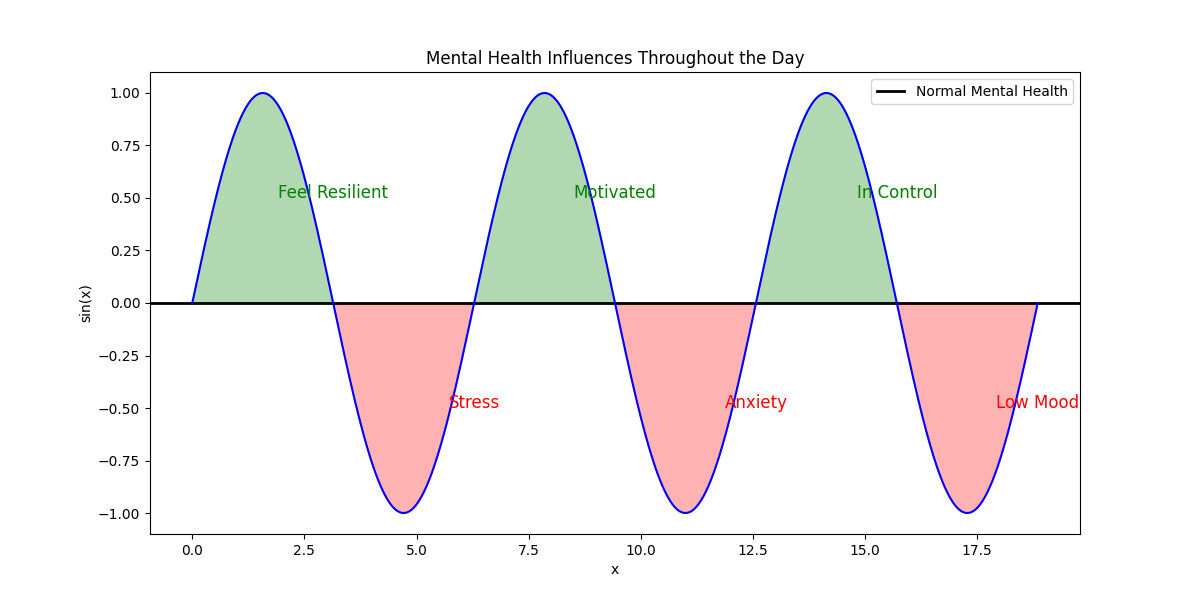

Think of mental health as a sine wave. Above the median line (Positive), we may feel resilient, motivated, and in control. Below the median line (Negative), we might experience stress, anxiety, or low mood. Most of the time, we find ourselves somewhere in the middle – on the median line, navigating life’s challenges and joys. External factors like a supportive environment, fulfilling relationships, or workplace stress can shift where we fall on this spectrum. For example:
The key takeaway is that mental health is not static, and everyone experiences fluctuations. A bad day does not define a person’s mental health, just as one workout does not define their physical fitness.
Imagine a 10-year-old child navigating a week at school. On Monday, they feel excited because they 100% passed a spelling test. By Thursday, they feel anxious about an upcoming maths exam and upset about a disagreement with a friend. Their mental health has shifted over just a few days, influenced by their environment and experiences.
Adults experience similar fluctuations, often tied to work pressures, relationships, or personal responsibilities.
Certain situations or events, known as triggers, can influence mental health in significant ways. Triggers may be positive or negative, and recognising them is a valuable step in maintaining balance. Examples include:
Understanding triggers allows individuals to take proactive steps. For instance, someone who recognises that looming deadlines cause stress might benefit from time management strategies or seeking support from their manager.
Workplaces are particularly impactful on mental health due to the amount of time we spend there. A supportive workplace with open communication, realistic workloads, and mental health initiatives can act as a buffer against negative influences. On the other hand, toxic work environments with high demands and low support can increase stress and anxiety.
Real World Example: A team member might feel overwhelmed during a busy project. If their manager acknowledges their workload and provides additional resources or flexibility, it can ease their stress and improve their mental health. Conversely, ignoring their concerns might lead to burnout or even resignation (if continued).
#ItsOktoNotBeOk
Mental health is a journey, not a destination. Its fluidity means there will always be ups and downs, but with the right tools, support and understanding, we can navigate these changes in direction effectively. By acknowledging and embracing this dynamic nature, we empower ourselves and others to prioritise well-being and foster resilience.
Building awareness of mental health and actively supporting well-being are essential steps toward creating a healthier, more resilient workforce and society. These practical steps can help individuals, teams, and organisations take meaningful action to prioritise mental health and foster a culture of understanding and support.
Awareness starts with recognising how we feel, both mentally and physically. Just as we might check in on our physical health when we feel unwell, we should regularly assess our own mental health.
Well-being practices are powerful tools for improving mental health. Small, consistent changes can make a significant difference over time.

Understanding what affects mental health positively or negatively, is key to managing it effectively. Triggers can vary widely from person to person, so it is important to approach this process with curiosity and openness.
For organisations, fostering a culture that values mental health is essential. This involves proactive steps to ensure employees feel supported and valued.
Real World Example: Imagine you are part of a team where your manager regularly asks, “How are you doing?” in a genuine, non-judgemental way. Members of the team will feel more comfortable discussing their challenges, knowing their concerns will be met with understanding and support.
There is no shame in seeking help from professionals when needed. Just as we see a doctor for physical ailments, we should seek support for mental health challenges.
Resilience is the ability to bounce back from challenges, and it can be cultivated through consistent, small efforts.
Workplace Application: Recognise employee achievements, no matter how small, and provide regular feedback to foster confidence and motivation.
Awareness and well-being are not destinations – they are ongoing processes that require attention and effort. Whether it is reflecting on your emotions, incorporating well-being practices, or supporting others in their mental health journey, every small step makes a difference. By fostering a culture of awareness and action, individuals and organisations can create environments where mental health is prioritised, valued, and supported.
No matter how much awareness we build or how many well-being practices we adopt, having access to the right resources and support systems is crucial for maintaining mental health. In this section, we will explore a variety of resources available in the UK and beyond, covering support for individuals, workplaces, and communities.
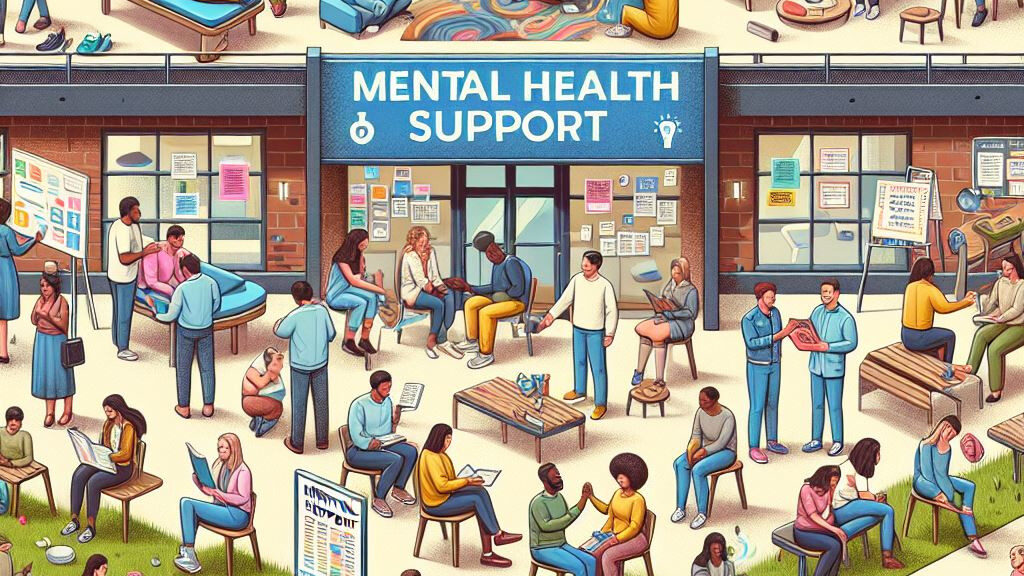
For immediate support or guidance, helplines and mental health charities provide vital assistance to individuals in need. These organisations are often available 24/7 and offer confidential, professional advice:
Digital platforms and apps are powerful tools for building awareness and practising mental health strategies. These resources are widely accessible and can be integrated into daily routines:
Workplaces play a critical role in supporting mental health, and many organisations are now investing in programs to help employees:
A company that provides access to EAPs ensures employees have professional support when dealing with stress, financial worries, or family challenges. This proactive approach helps reduce absenteeism and fosters loyalty.
Mental health support tailored for younger individuals is essential, especially as mental health challenges often emerge early in life:
Community-based support plays an essential role in addressing mental health on a broader scale. Joining local groups or initiatives can provide individuals with a sense of belonging and shared purpose:
Sometimes, self-help tools and community resources are not enough. Knowing when to seek professional help is critical for addressing more complex mental health challenges:
Having the right resources and support systems in place is a cornerstone of mental health and well-being. Whether it is a helpline, a mindfulness app, or a supportive workplace culture, these tools provide a lifeline for those in need. By making these resources widely known and accessible, we can take meaningful steps toward a healthier, more resilient society.
Mental health is not a fixed destination; it is a journey that evolves throughout our lives. It is shaped by our experiences, relationships, and the environment we live and work in. By understanding mental health and integrating well-being practices into our daily routines, we can build resilience, foster stronger connections, and create healthier communities.
This post (whilst long and detailed) has explored the core concepts of mental health, from defining what it truly means to addressing common misconceptions and understanding its fluidity. We have also discussed practical steps for improving awareness, supporting well-being, and accessing vital resources.
Mental health awareness begins with small steps. Start by reflecting on your own well-being, checking in with colleagues, or sharing helpful resources with others. Organisations, too, can take proactive measures to prioritise mental health, creating environments where employees feel valued and supported.
Remember, mental health is not just a personal responsibility, it is a collective effort that requires empathy, understanding, and action. By fostering a culture of openness and support, we can break down barriers and build a future where mental health is valued and protected.
In the next post, “Mental Health vs Mental Illness: Dispelling Misconceptions,” we will delve into the critical differences between these two terms. Many people conflate mental health with mental illness, but understanding the distinction is key to addressing stigma and fostering inclusivity. We will explore what mental illness encompasses, how it differs from mental health, and why this understanding matters for individuals and organisations alike.

Microsoft Solution Architect, Senior Project Manager, and Mental Health Advocate